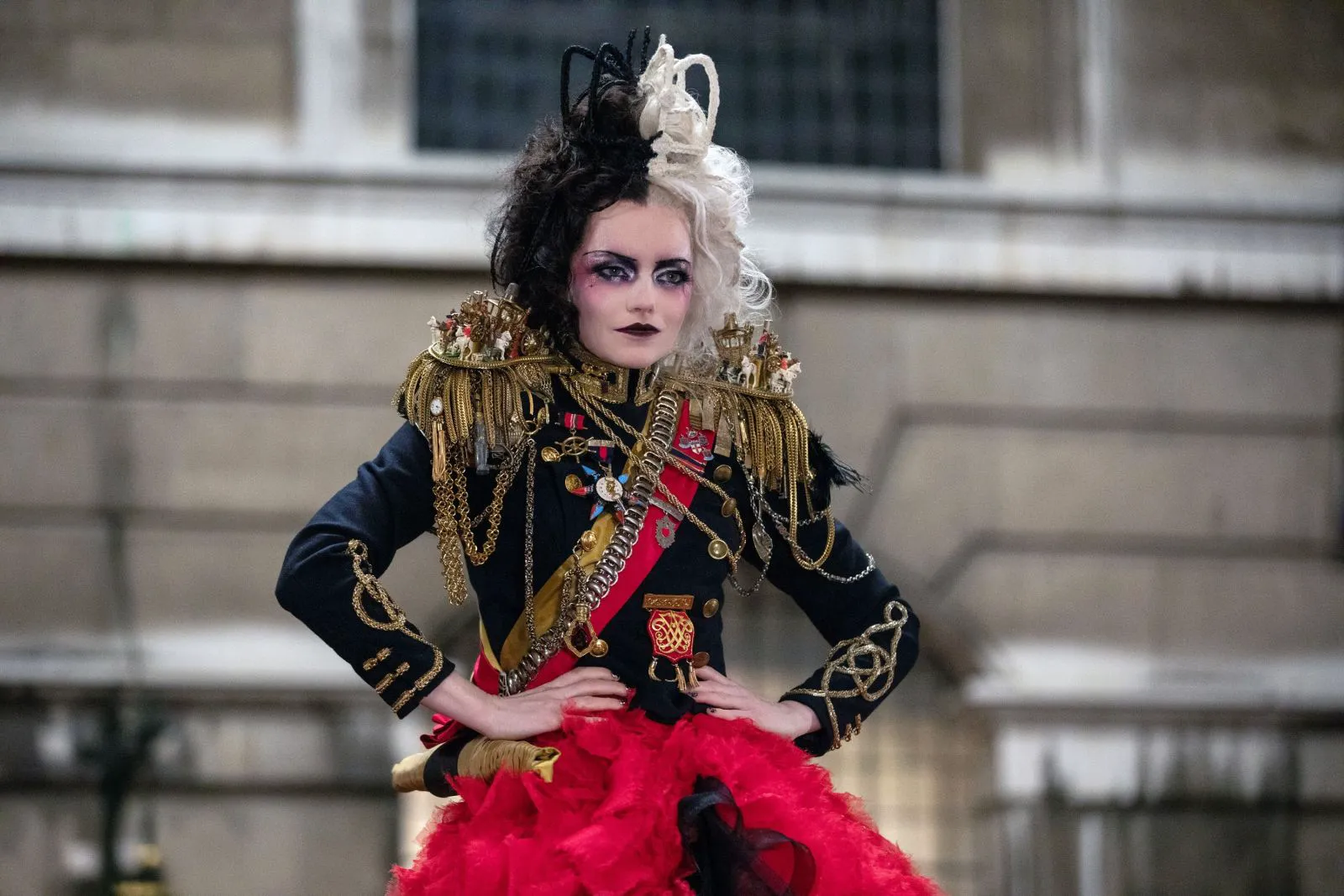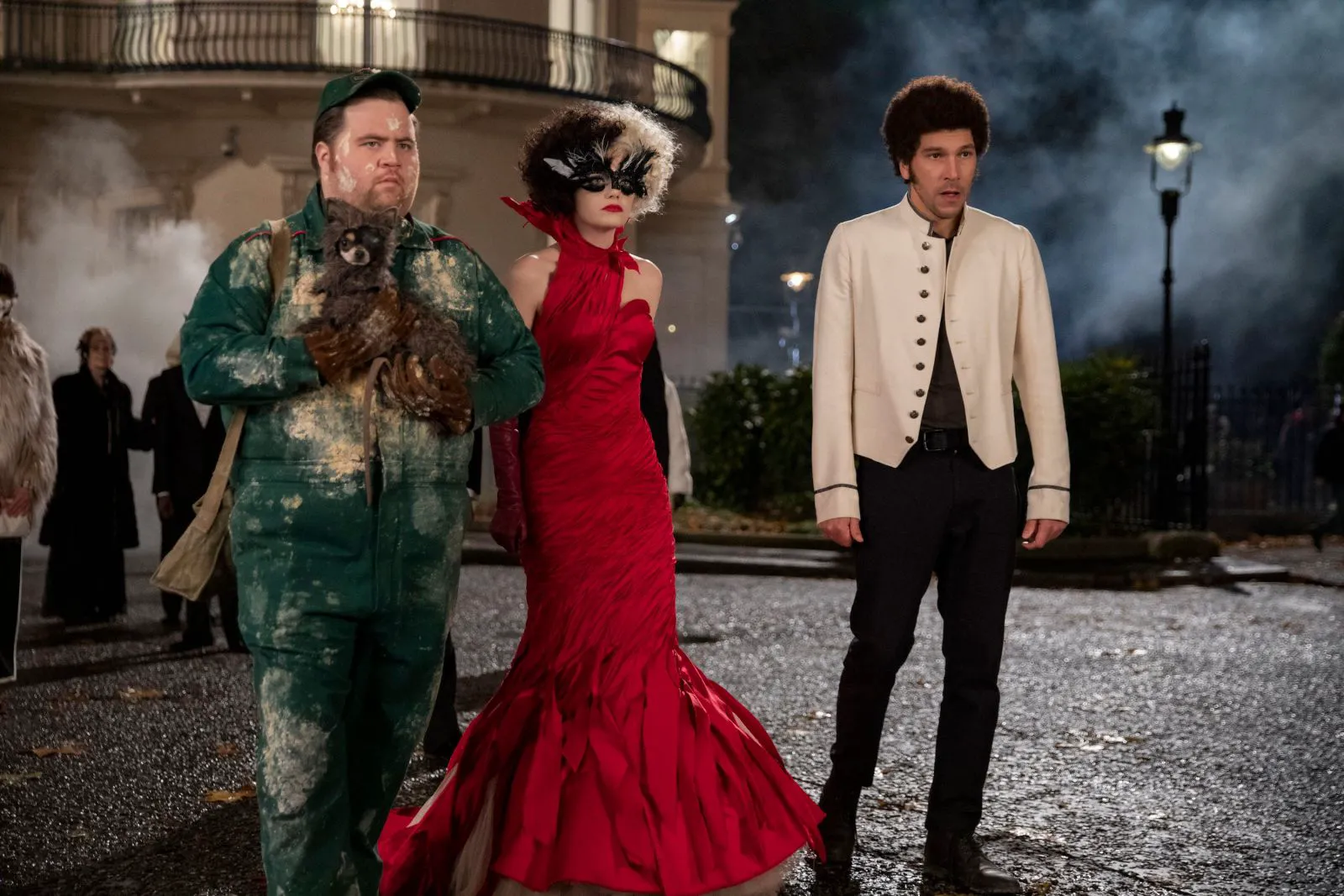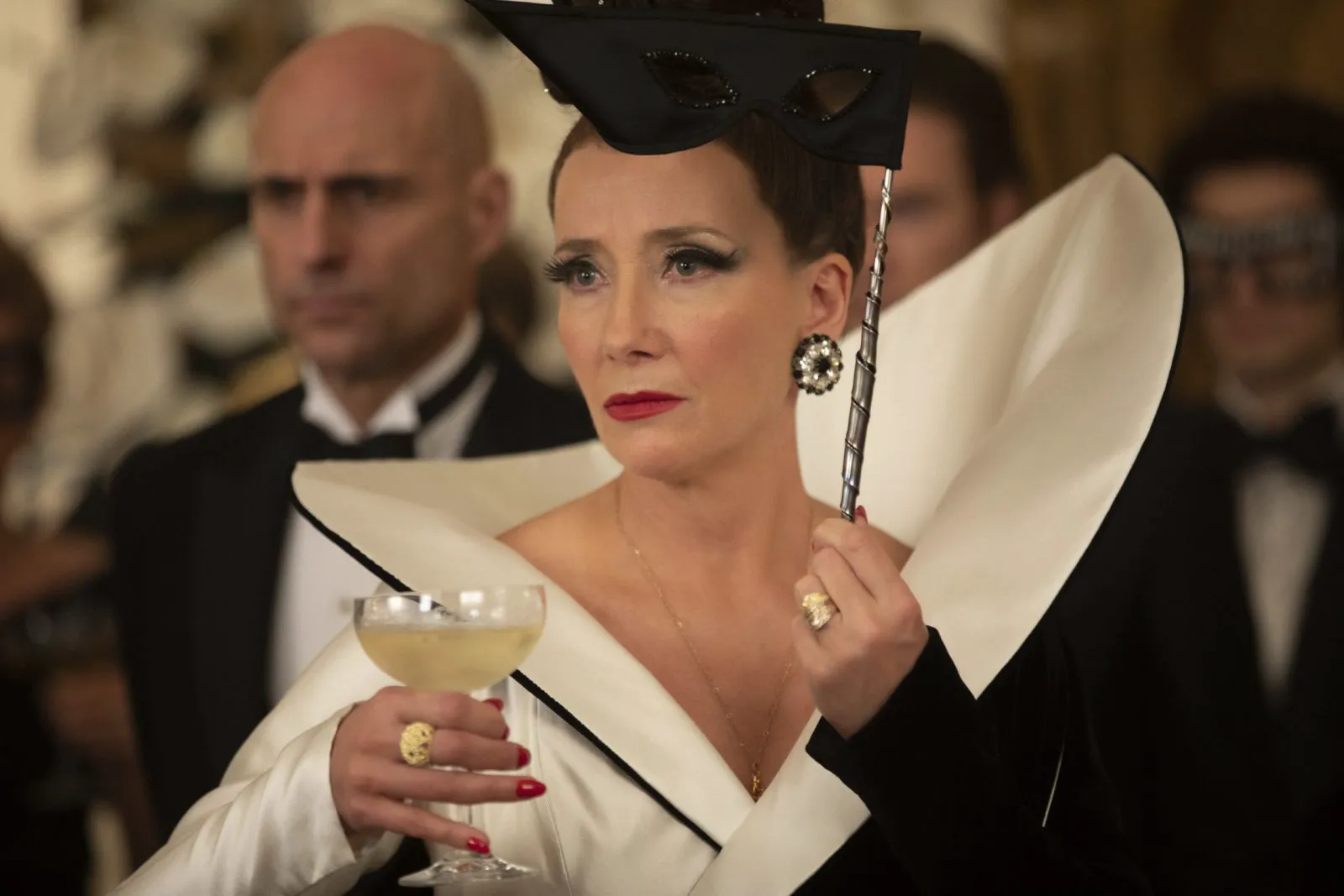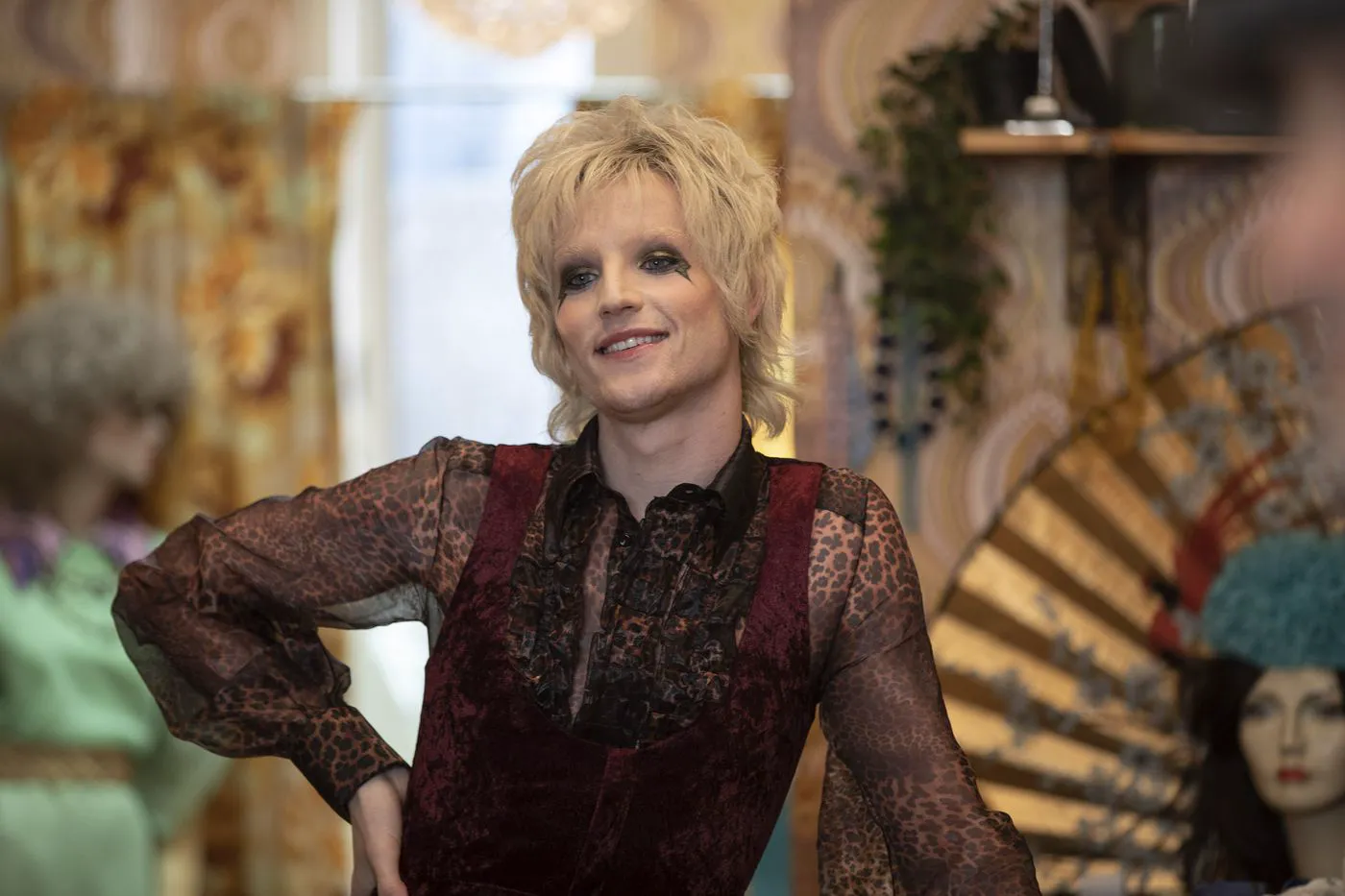Estella (Emma Stone) was never one to play by the rules. From schoolyard brawls to her striking black and white hair, everything about her screamed rebellion. As she tries to make her way in the 1970s fashion world, she realizes that good intentions are boring and stifling. Her character’s mad alter ego, Cruella De Vil, is unleashed, transitioning to a stage of moderate hell with boundless extravagance and punk-inspired spectacle.
Immediately after the project was announced in 2019, many on social media reasonably questioned the need to delve into the origins of absolute evil, however comical, but ultimately inexcusable. This was precisely how the fur-obsessed, skinning fashion designer was portrayed in the 1961 animated “Dalmatians” and twice in the live-action versions starring Glenn Close. A stream of inflamed consciousness, uncontrolled mania, and a lexicon of phrases for LGBTQ+ allies, instantly becoming a style icon for drag queens of all stripes.

Emma Stone as Cruella De Vil
The creator of the original book, Dodie Smith, did not envision any other functions for her character, and there was no question of sympathy for a clear-cut murderer who became one by her own choice. The authors of the new interpretation—director Craig Gillespie of “I, Tonya” and screenwriter Tony McNamara of “The Favourite”—came up with the idea of making De Vil confused and ambiguous. After all, a trend is a trend, the honor and demands of the “mouse factory” must be defended, and the fashion for reinterpretations must be supported. As a result, the film manages to cram in a list of memorized templates on familiar, differently formulated questions, find the real problem of a spoiled soul in a dysfunctional family, and really let loose on costumes, soundtrack (The Beatles, Nina Simone, Blondie), and actors.

Joel Fry as Jasper in a still from “Cruella”
“Cruella” turned out to be darker than standard protocols, refreshingly more ironic than the tiresome “Joker,” strutting ahead of its competitors at the box office, and predictably overloaded. What milestones won’t you cross for a vile moth gnawing at dresses, a couple of martinis, lighters, or the “first gay character in studio history” (Art, Cruella’s assistant, is not: before him, there were at least LeFou from “Beauty and the Beast” and the constantly kissing rebel girls in the latest “Star Wars”). “Cruella” desperately wants to go beyond the canon, jump above parental control and demands, but sooner or later it runs into the same fairy-tale distances and cultivates the unplowed field of compromises against which it was primarily conceived.

Emma Thompson as The Baroness in a still from “Cruella”
We won’t touch the Dalmatians in the film who support Tottenham, we only comically avenge ourselves on truly bad animals—people. The latter are represented by the Baroness (Emma Thompson), Estella’s toxic boss, who steals her sketches, kills the unwanted in the literal and figurative sense, and will soon regret everything. Inverted humanism mixed with boutique feminism, miles of fabric, and advertising slogans like “I’m the future,” where “roaring” ones are taken, turns out to be sour and not at all angry. They are made into seemingly edible pancakes, the creators are rewarded for their efforts, but it pricks, pinches, and rubs noticeably, and this is despite the fact that visually polished Disney haute couture has few equals.

John McCrea as Artie in a still from “Cruella”
On Stone’s hand is quite the Thanos gauntlet, the stones are collected on time, and the situation is once again expectedly saved. Emma obviously did not aim to copy Glenn Close, for which she should be thanked (camp succeeds for few). The actress made Cruella’s rise or fall major, thorough, and even relaxed. No, really, there is no demonic laughter that has become her trademark—her inward gaze and slightly Nietzschean abyss work for it, which is also high for an audience of 12+. Thompson manages to bypass even them: she plays a villain rare for her filmography, which brings even more delight, scattering pearls and boyish quotes with an aristocratic intonation and an olive in her teeth (either you get them, or they get you). Their joint scenes and dialogues from the position of comedic timing even sparkle from chewing on each line, drawn-out “darling,” and throwing squints.
Costume Design: A Rebel Yell
The main rebel of the film is rightfully costume designer Jenny Beavan (“Mad Max: Fury Road”), the creator of a hundred mind-blowing and emotionally charged outfits that every aspiring designer should envy. Rock-n-roll never dies, punks are still alive, she approaches rebellious culture with ingenious meticulousness and boundless inventiveness.
Final Thoughts: Stay a Little Bit Mad
Even after a tiring two-plus hours of running time, I didn’t want to get off the needle of Disney approval. One man is not a warrior in the field, the studio’s efforts are still symbolic, tokenism has not evaporated. It’s a pity to look at the evil and boring, the film says, but it’s a pleasure to look at the evil and energetic, unexpectedly pleasant. “Cruella” as an origin story does not frighten, continues to feed with spoonful promises, tries not to lament. Did you go off the route? That’s great, stay a little bit mad.